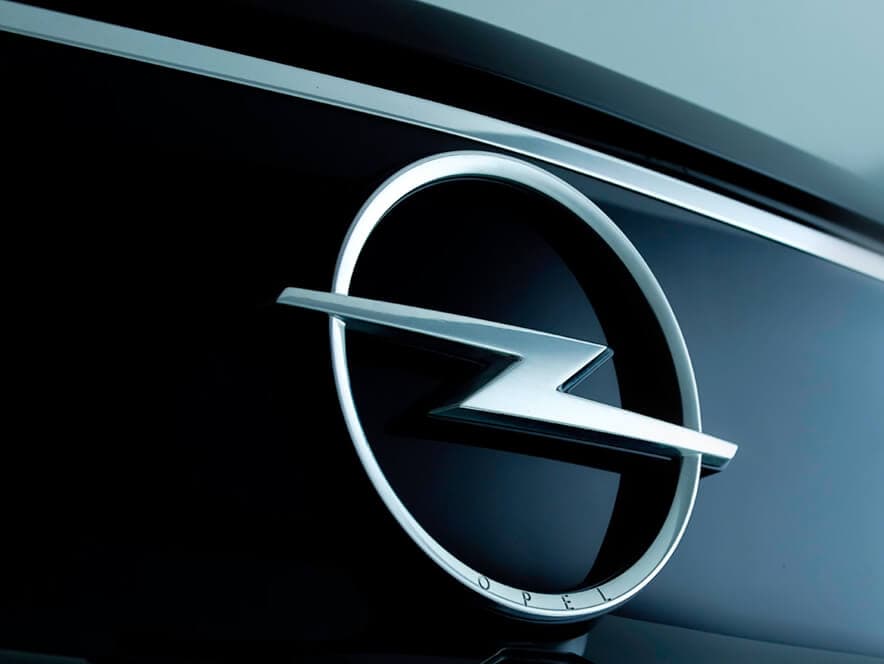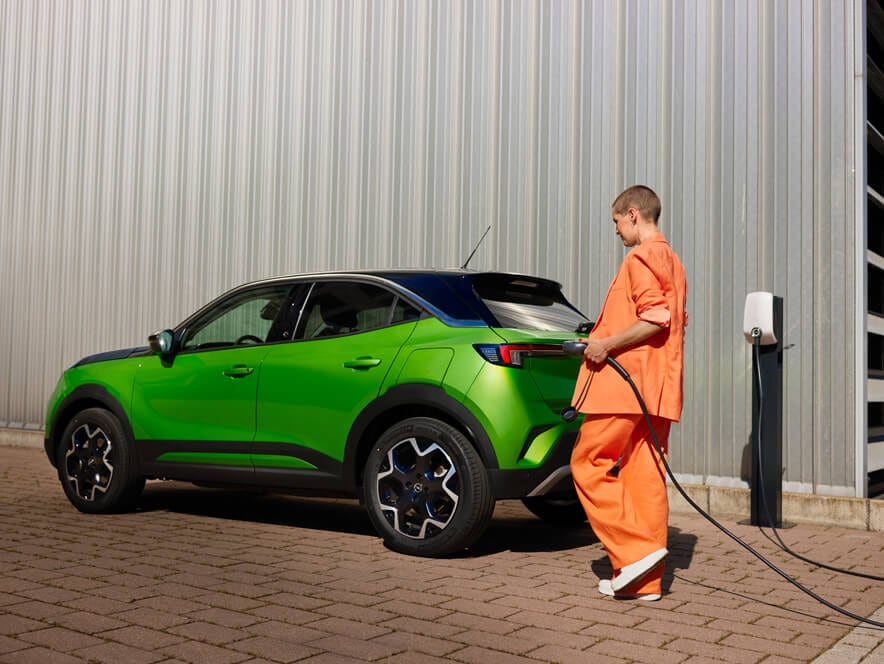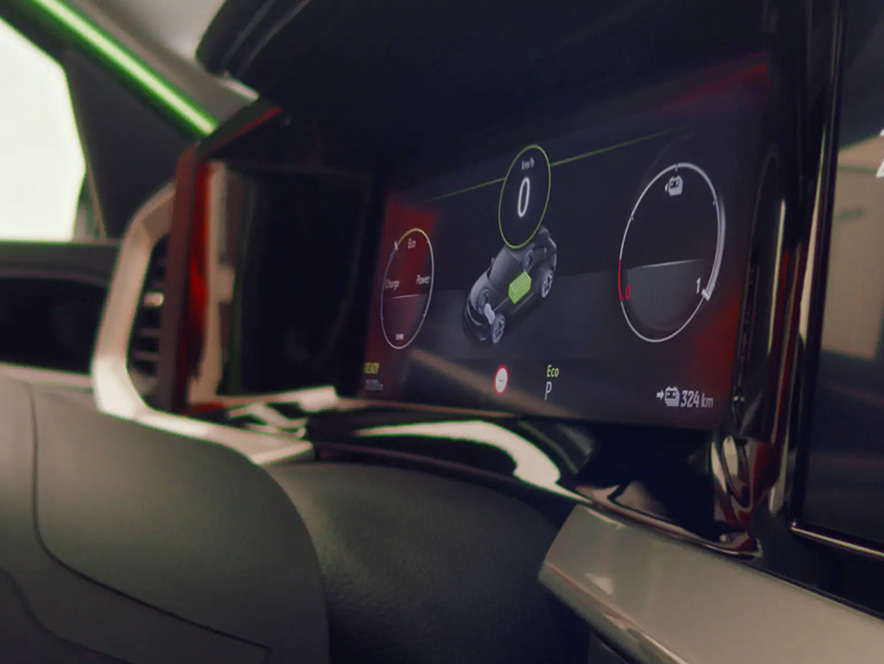AN ELECTRIC VEHICLE MEANS A CLEAR ADVANTAGE.
Electric vehicles are efficient, quiet, and locally emission-free. They require less maintenance than combustion engines and much of the electricity they need comes from renewable sources. That is a decisive advantage for the environment. And for all of us.
BYE BYE, CO2.
Electric vehicles have numerous advantages for the environment.
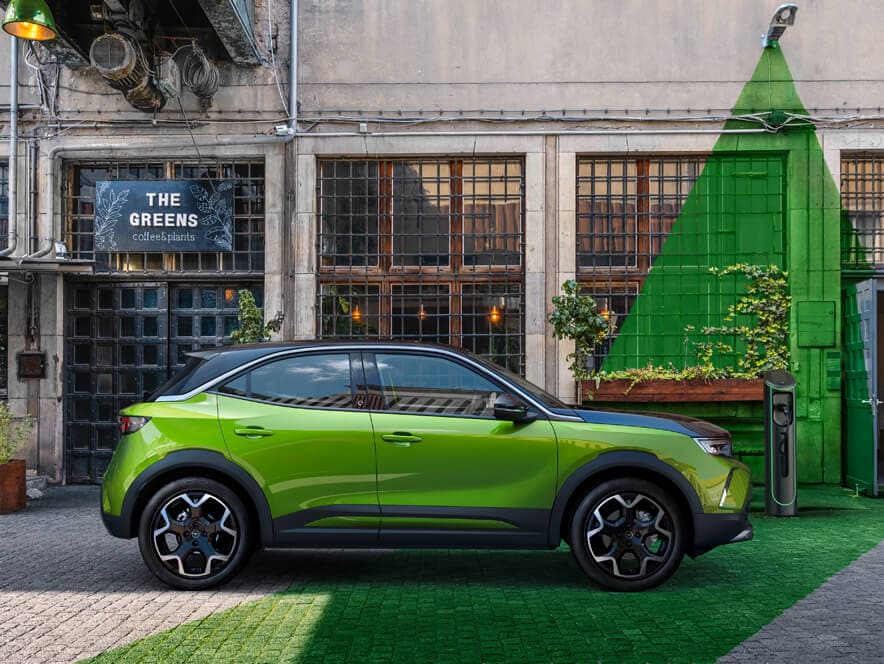
BETTER CARBON FOOTPRINT.
The carbon footprint of electric cars is significantly better than that of combustion engines—over their entire service life. This has been proven by numerous studies. The most important reason is that electric motors are more energy-efficient and do not emit a single gram of CO2 while you’re driving.
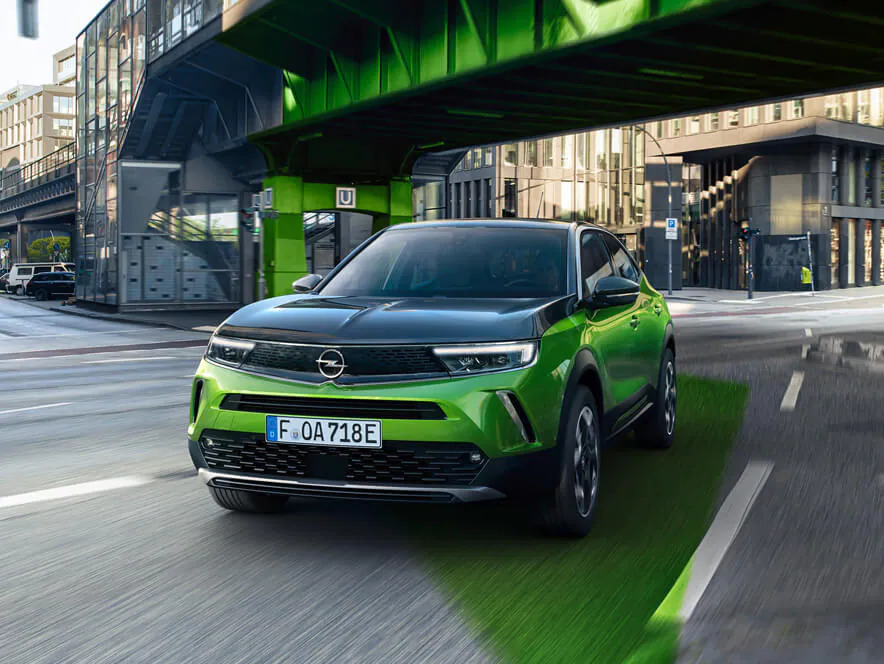
BETTER FOR THE ENVIRONMENT.
Of course it’s true that energy is needed for battery production and that releases CO2. But electric vehicles recoup this energy during operation. A recent study shows that the CO2 balance is already equalised after about 30,000 kilometres—a super value with an assumed battery life of 250,000 kilometres!
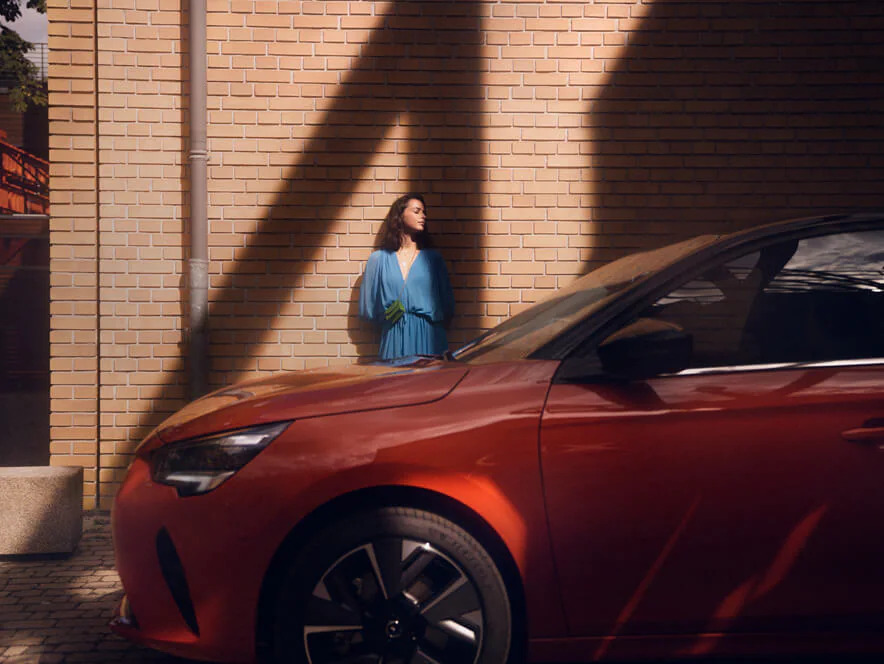
NO POLLUTANTS? FANTASTIC!
Electric vehicles are not included in any pollutant class. That makes perfect sense because they don’t emit any pollutants. That means they can be driven everywhere without hesitation—even in the growing number of city-centre environmental zones. A clear advantage over all combustion engines.
THIS ALSO SPEAKS IN FAVOUR OF ELECTRIC VEHICLES. Financial benefits.
Electric vehicles pay off. You can currently benefit from a number of attractive subsidies and incentives. Find out how the purchase of an electric vehicle can benefit you or your company.
ENHANCED VEHICULAR EMISSIONS SCHEME (VES)
The VES is enhanced with increased rebates. For electric cars or taxis registered from 1 January 2021 to 31 December 2022 you will now qualify for the following emission rebates:
The enhanced VES is based on a vehicle’s carbon dioxide (CO2) emission, plus emissions of 4 pollutants—Hydrocarbons (HC), Carbon Monoxide (CO), Nitrogen Oxides (NOX), Particulate Matter (PM).
EV EARLY ADOPTION INCENTIVE (EEAI)
The Singapore Government has introduced measures to facilitate adoption of Electric Vehicles (EVs), which it recognizes as one of the cleanest and lowest-emission vehicular technologies available today.
From 1 January 2021 to 31 December 2023, owners who register fully electric cars and taxis will receive a rebate:
This scheme applies to individual and fleet vehicle owners, such as taxi and car rental companies.
REVISED EV ROAD TAX STRUCTURE
As part of the revised EV road tax structure, the Singapore Government has revised the methodology for calculating the variable component of the road tax for EVs, which is tiered by power rating, to better reflect the current trends in vehicle efficiency from January 2021. This is an across-the-board reduction in this variable component of road tax for EVs.
Under the revised road tax framework, mass market electric vehicles will incur an annual usage cost which is still about 9% lower than their Internal Combustion Engine (ICE) equivalents.
COMMERCIAL VEHICLE EMISSIONS SCHEME (CVES)
The CVES incentive will be paid as a cash grant from the National Environment Agency (NEA) through the Land Transport Authority (LTA) to the registered owner of an electric light commercial vehicle (LCV)—i.e. an electric light goods vehicle (LGV), electric goods-cum-passengers vehicle (GPV) with maximum laden weight not exceeding 3,500 kg.
For electric LCVs registered from 1 Apr 2023 and 31 Mar 2025, the disbursement of grant amounts are as follows:
ENHANCED EARLY TURNOVER SCHEME (ETS)
The Early Turnover Scheme (ETS) gives you benefits when you replace your older diesel goods vehicles and buses with more environmentally friendly electric models. The ETS has been enhanced and extended to include additional vehicles. The Enhanced ETS is in effect from 1 April 2023 to 31 March 2025.
Under the Enhanced ETS, existing Euro II, III, and IV Category C diesel vehicles are eligible for the ETS incentive. The incentives will be based on the type of the existing vehicle and replacement vehicle registered under the Enhanced ETS.
Enjoy a discounted Prevailing Quota Premium (PQP) for your COE when you register your replacement electric commercial vehicle.
ELECTRIC MOTOR ADVANTAGES.
The electric motor simply explained.

ELECTRIFYING DRIVING DYNAMICS
High efficiency, low running costs, zero emissions—so much for the many sensible reasons in favour of a vehicle with an electric motor. But what’s it like to drive an Opel electric vehicle? Look forward to torque that’s there instantly, giving you a whole new kind of driving pleasure.

HIGH EFFICIENCY
Perhaps the greatest advantage of an electric motor is its high efficiency—that is, the ratio of power used to power consumed. While up to a third of the energy in a combustion engine is lost through heat loss, the electric vehicle uses a sensational 95% of the available energy for driving.
THE ELECTRIC MOTOR IN DETAIL.
Every electric motor needs a charging station or energy source as a power supply. Electric current is then converted into mechanical energy. In the case of electric vehicle batteries, a wall box or charging station is needed for charging.
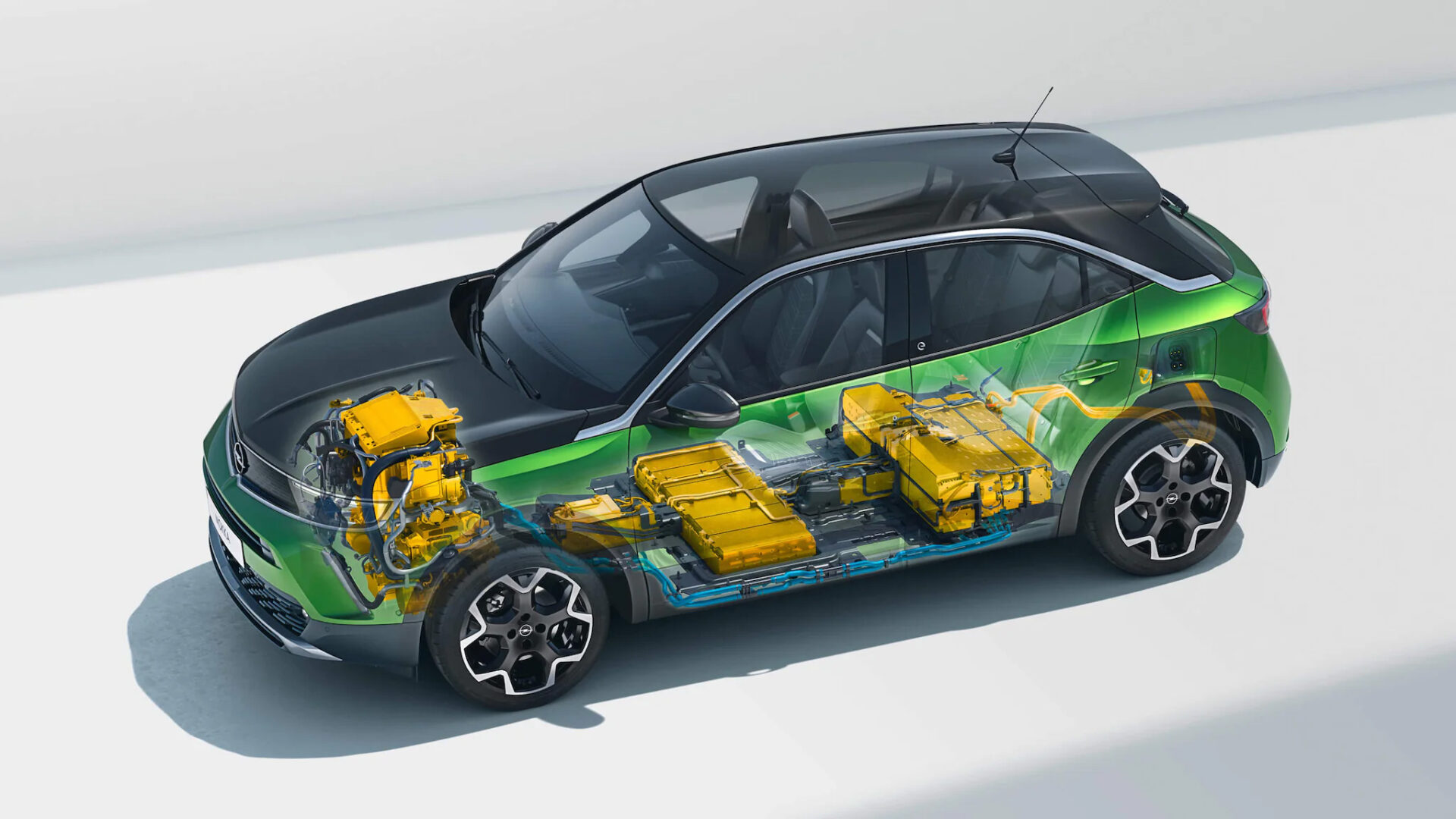
HOW AN ELECTRIC MOTOR WORKS.
The motor of an electric vehicle converts the current from the battery into mechanical energy. This is done by a fixed magnetic part (stator) and a moving part (rotor) that is made magnetic by electricity. If two positive poles are facing each other due to the electrical charge, they repel each other—and the moving part of the electric motor rotates.
To understand this function of the electric motor, you only need a basic knowledge of magnetism: like poles repel and different ones attract. With electric current, it is possible to make a non-magnetically charged part magnetic. And the polarity can also be influenced, depending on the direction in which the current flows. With every half turn, the direction of the current changes automatically. This ensures that the machine remains permanently in motion and does not stop at dead centre.
THE ELECTRIC VEHICLE DRIVETRAIN
Electric motors develop similar torque at low as well as at high speeds. Theoretically, therefore, a rigid connection between the motor and the drive shaft would suffice for them. In practice, however, an input gearbox is usually used as a so-called reduction gear, which reduces the speed of the motor by a factor of about 1:10.
The acceleration in an electric vehicle is comparable to that of an automatic transmission. After starting the engine, all you have to do is shift to “D” for Drive—and you’re off to a dynamic start!
THE ELECTRIC VEHICLE POWERTRAIN
The motor of an electric vehicle consists of two electromagnets—stator and rotor. The stator is immobile and generates a constant magnetic field with the help of direct current. The rotor is rotatable and produces its magnetic field with alternating current. The two magnets alternately attract and repel each other. The rotor rotates—and thus sets the vehicle in motion.
Electric vehicles drive with a what is known as a synchronous alternating current motor. It gets its energy from power electronics. It converts the current from the battery into the right shape, strength and frequency. Incidentally, the stator is always made of soft magnetic iron. To avoid eddy currents in the magnetic field, it is usually also laminated. This means that several layers of sheet metal insulated from each other are mounted on top of each other. This enables the stator to generate or guide the magnetic field.
THE ELECTRIC VEHICLE INVERTER
The inverter is also called a converter. This is because it has the task of converting the 3-phase AC voltage of the electric motor into a DC voltage for charging the battery when braking. Conversely, when the electric motor is driven, the battery’s DC voltage is converted into a 3-phase AC voltage.
INTERESTING INFORMATION ABOUT ELECTRIC VEHICLES.
HOW DOES AN ELECTRIC MOTOR WORK COMPARED TO A COMBUSTION ENGINE?
An electric motor converts electrical current into kinetic energy and it does so much more efficiently than a vehicle with an internal combustion engine. Compared to the combustion engine, the motor of an electric vehicle has a much simpler design—and is also lighter. Inside it, changing magnetic fields are converted into movement. To be more precise, permanently integrated stators, or in other words magnets, constantly change their poles due to the energy from the battery. The rotor sitting in the middle or in the stator, another magnet, is thus alternately attracted and repelled. This causes it to rotate and finally sets the wheels in motion.
WHAT ARE THE ADVANTAGES OF E-MOBILITY?
E-mobility allows you to travel locally with zero emissions. Electric vehicles are also more economical than vehicles with conventional combustion engines—and require less maintenance. And thanks to the direct, powerful drive, they are not only great fun to drive, you will experience a completely new dimension of driving.
WHY ARE ELECTRIC VEHICLES MORE ECONOMICAL IN THE LONG-TERM?
Lower fuel and electricity costs, tax breaks and purchase bonuses: it pays to switch to electric mobility. For example, the maintenance and repair costs for electric vehicles are significantly lower than for combustion engines. This is because fully electric vehicles have fewer moving parts in the drive train and engine and that ensures less wear and tear.
NOT FOUND THE RIGHT INFO YET?
ELECTRIC VEHICLE MODELS
Opel Electric Passenger Cars, SUVs, MPVs, and Commercial Vans. E‑mobility made easy. Choose your e‑model and set off on your zero‑emissions journey.
ELECTRIC VEHICLE CHARGING AND DRIVING RANGE
There’s a wide range of charging options that you can use to charge on the road or at home. With our information, charging your vehicle will be as easy as charging your smartphone.
ELECTRIC VEHICLE BATTERIES
The battery of an e-model consists of battery cell modules. The more modules, the greater the range. Modern systems rely on “pouch cells”, which are similar in design to mobile phone batteries. In addition to this high-voltage battery, there is also a 12-volt battery that supplies the on-board electronics.
WHAT’S NEXT?
Discover how much you can save by requesting for a vehicle trade-in quotation. You also have the option to arrange an appointment for a test drive at your convenience. If you have any questions about our Electric Vehicle range, a dedicated Opel advisor can be easily reached to provide you with personal guidance. We appreciate your interest and are happy to help.


